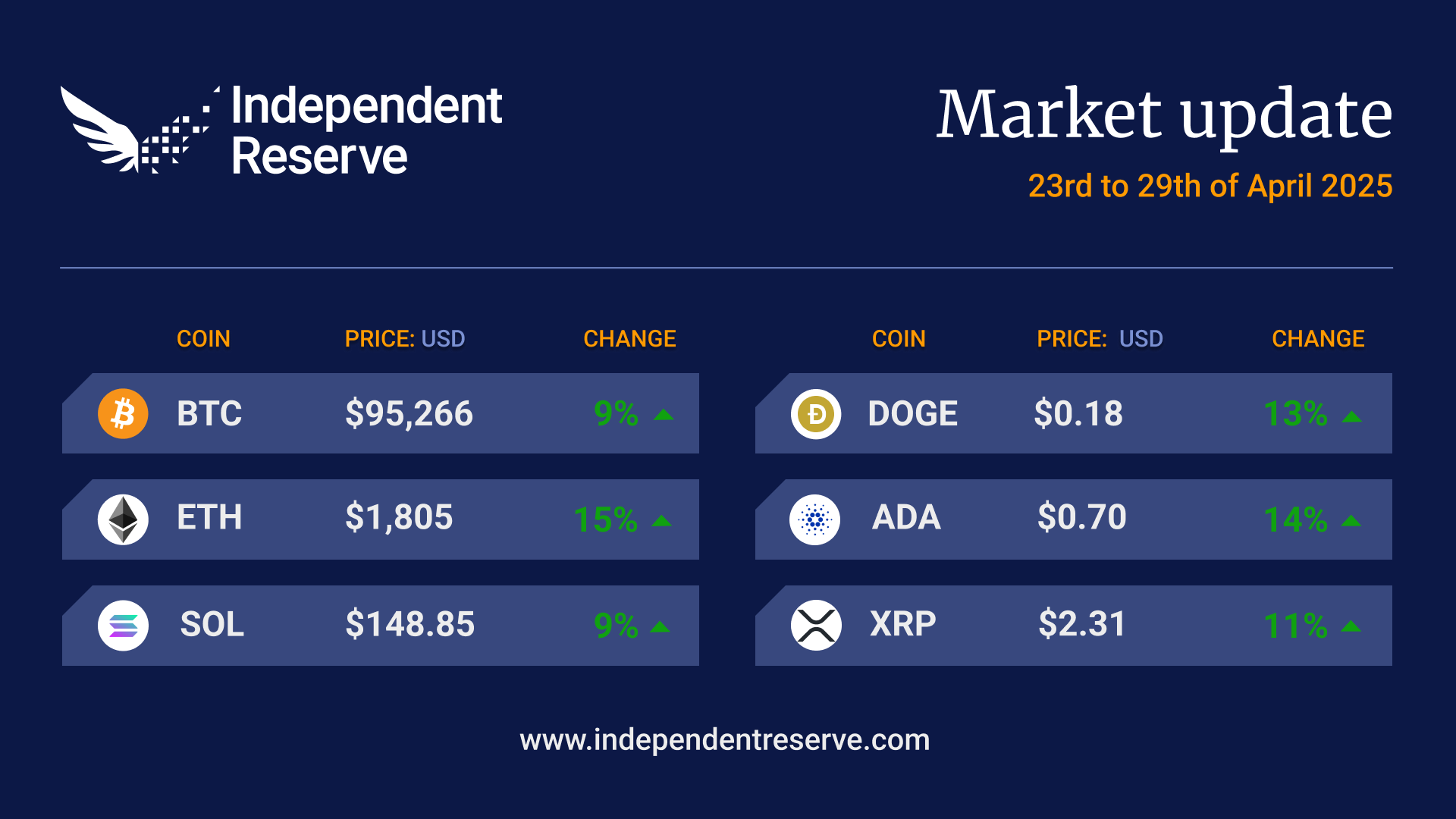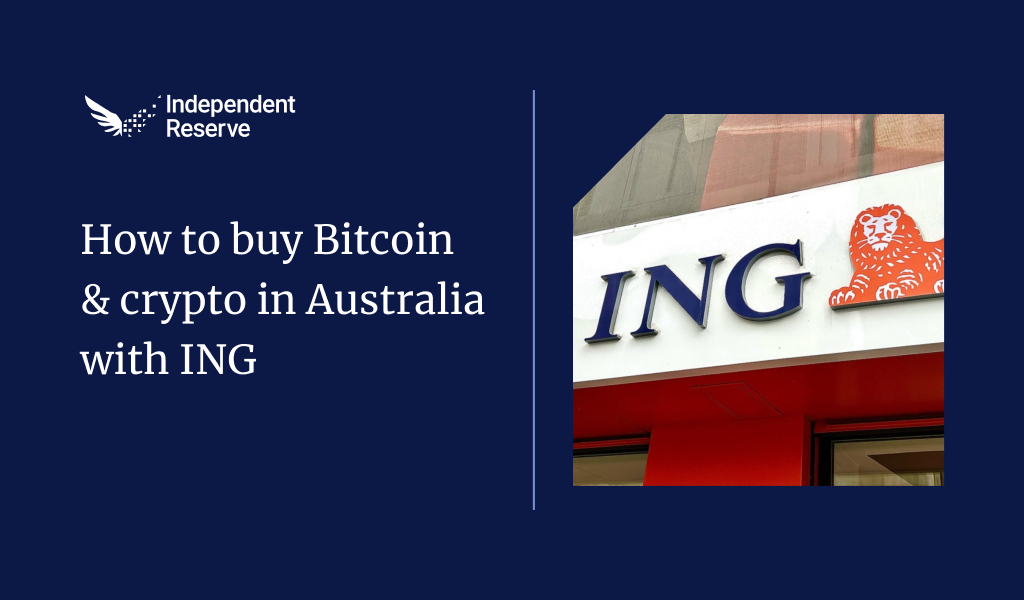In Markets
The bear market rally ran out of puff on Friday with Bitcoin falling below the 200-week moving average. It’s currently down 14% for the week and trading around A$30,970 (US$21.3K). Ethereum fell 17% to trade around A$2,350 (US$1,620), possibly related to fears over decentralisation and transaction censorship in the fallout from the Tornado Cash sanctions. Traditional markets are in the red too due to macro factors including comments by the Federal Reserve Bank of St. Louis President James Bullard who said he favoured a 75-basis point hike in interest rates next month. The last hike of that magnitude saw crypto market turmoil. Everything else was down on the week, with XRP falling 12%, Cardano (-20%) and Polkadot (-19%). The Crypto Fear and Greed Index is at 29 or Fear, down from 45 last week.
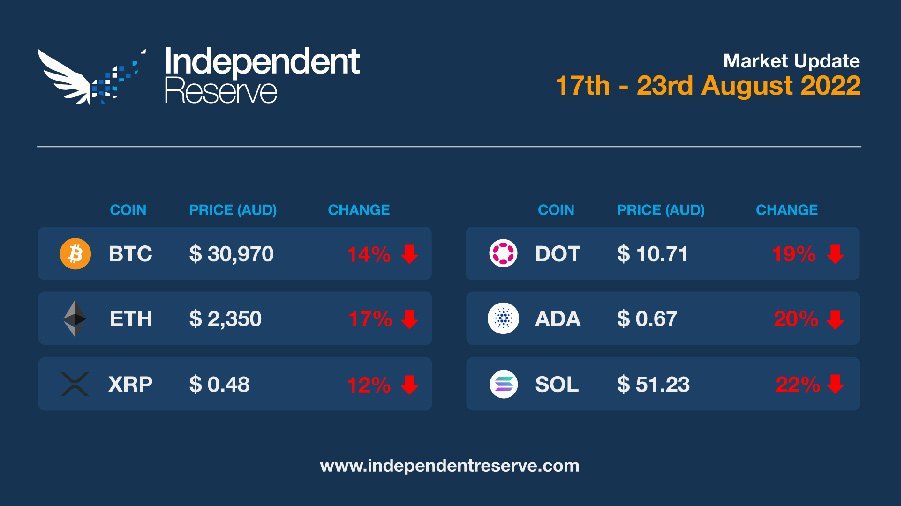
From the IR OTC Desk
The Federal Open Market Committee’s (FOMC’s) Meeting Minutes for July proved to be a significant catalyst to the risk off sentiment this week. In the details of the Minutes, the FOMC has committed to raise interest rates as ‘high as required’ to tame inflation and currently see ‘little evidence’ that inflation pressures were subsiding – while remaining data dependent.
This resulted in US 10-year Treasury Notes moving circa 20 basis points higher (in yield), to trade back above 3.00%. Additionally, the US dollar index (as expressed by the DXY), moved from 106.50 to 109.00 – and is looking likely to test the YTD peak of 109.29. Equities and cryptocurrencies were not spared in the move. While the NASDAQ Composite retraced nearly 6%, BTC and ETH have only recently found support at levels near 10% lower than this time last week.
US inflation and labour market data will remain critical for monetary policy and macroeconomic markets. In terms of inflations, Friday the 26th of August delivers the PCE Price Index data for July. This is the Federal Reserve’s preferred measure of inflation and should be watched carefully. Friday also brings the annual Jackson Hole Economic Symposium, in which Federal Chair Jerome Powell will address the topic ‘Reassessing Constraints on the Economy and Policy’. Risk markets will remain keenly focused on detail relating to how high borrowing costs may need to go. Expect a reduction in liquidity and an increase in market volatility towards the end of the week.
In Australia, last week’s labour market data was mixed. While the unemployment rate moved down to 3.4% (from 3.5% prior), the absolute number of jobs being created seemed less credible to a strengthening labour market. Short term interest rate futures have currently concluded that an additional 50bps rate increase at the next Reserve Bank of Australia (RBA) meeting (6th of September) is most likely. This is obviously subject to change – with Friday evenings data also proving critical to whether a 25bp or 50bp increase is most warranted. AUD/USD remains soft, after falling from 0.7100 to below 0.6900 in a brutal week for commodity currencies.
On the OTC desk, risk sentiment has materially changed. Despite negative price movements in the underlying, volumes continue to pick up. This has been largely attributable to increases in sell side flow across the desk. The move in ETH/BTC has remained relatively benign, having traded from circa 0.07850 to near 0.0755. Last week we highlighted two general themes for cryptocurrencies 1) that speculation may be driving allocations further out the cryptocurrency risk spectrum, and 2) that velocity of DeFi will remain an important fundamental market indicator of price action. Quite interestingly this week, we continue to see good interest in lower market capital coins and a search for correlated value – expect this to continue as volatility remains high. In terms of more fundamental pricing, velocity continues to prove key.
For any trading needs, please don’t hesitate to get in touch.
In Headlines
Where to from here?
Economist Alex Kruger said the scale of the dump means that “charts are now broken, the trend is back down, underwater traders will be looking to sell at break even and trend traders will be looking to sell rallies.” Edward Moya, a senior market analyst at brokerage firm OANDA says we’re likely to see another dramatic sell off before things recover and tips the BTC price will dip to US$10K (A$14.5K). Analyst Wendy O says we’re in “full blown bear market, not a bear cycle” and thinks ETH is at risk of falling to US$750 (A$1,090). However Real Vision CEO Raoul Pal called it a “cheeky pre merge crypto shakeout” and said even if ETH did hit new lows for the year he’d stock up due to the high risk versus reward ratio as he expects it to hit US$20K (A$29.1K) in the next couple of years. “50% downside vs possible 10x upside = 20:1 R/R” he said.
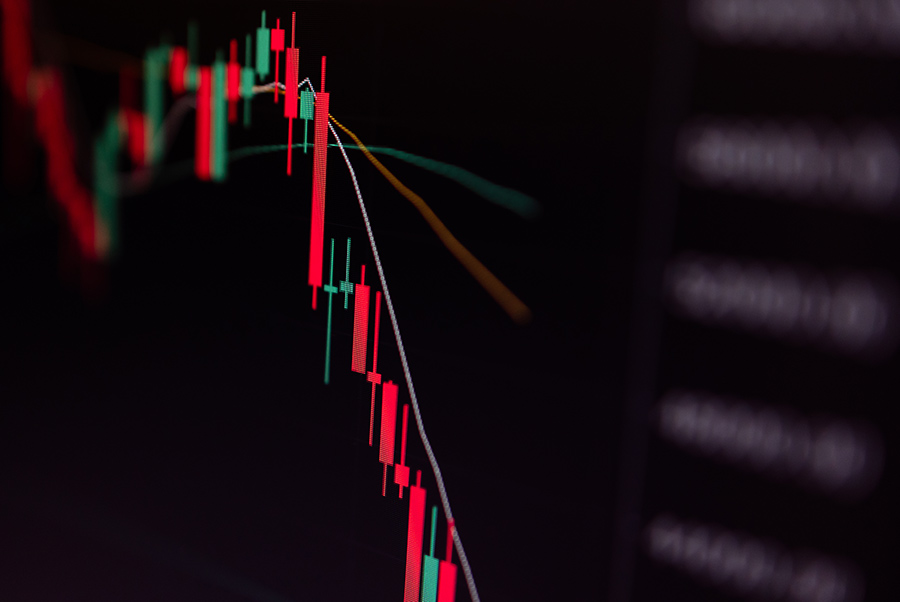
Token Mapping
The Albanese government has finally signalled its direction on crypto regulation by announcing a token mapping exercise. This was one of the 12 recommendations in last year’s Senate inquiry report on crypto regulation. Cointelegraph reports that Treasury will also be working on some of the other recommendations too, including a licensing framework for platforms dealing in non-financial product crypto assets, safeguards for consumer crypto custody, and a look at regulating innovative DAO structures. Treasurer Jim Chalmers said: “As it stands, the crypto sector is largely unregulated, and we need to do some work to get the balance right so we can embrace new and innovative technologies.”
ASIC has plans too
The Australian Securities and Investments Commission released a new corporate plan for the next four years on Monday and crypto featured prominently. ASIC will keep a close eye on product disclosure statements of major crypto offerings in Australia and create a regulatory model for exchange-traded products with crypto assets.
Sanctions and Ethereum
The Tornado Cash sanctions are causing considerable debate within the Ethereum community with Ethermine, Infura and a bunch of protocols already censoring transactions. With centralised staking providers now accounting for more than half of the ETH staked on the Beacon Chain (replacing mining after the Merge) there are concerns they’ll be forced to do so as well. Crypto analyst Eric Wall wrote a good assessment of the issue, tipping that if the Office of Foreign Assets Control attempted to force Ethereum to censor transactions at the protocol level, the community would implement social slashing (financial penalties for bad behaviour) or a User Activated Soft Fork (UASF) and the censorship chain would be abandoned. CyberCapital founder Justin Bons argues this “nuclear option” is unnecessary as Ethereum is already censorship resistant. It may not come to that however: the OFAC hasn’t yet acted against Bitcoin miners for not blocking transactions involving sanctioned entities.
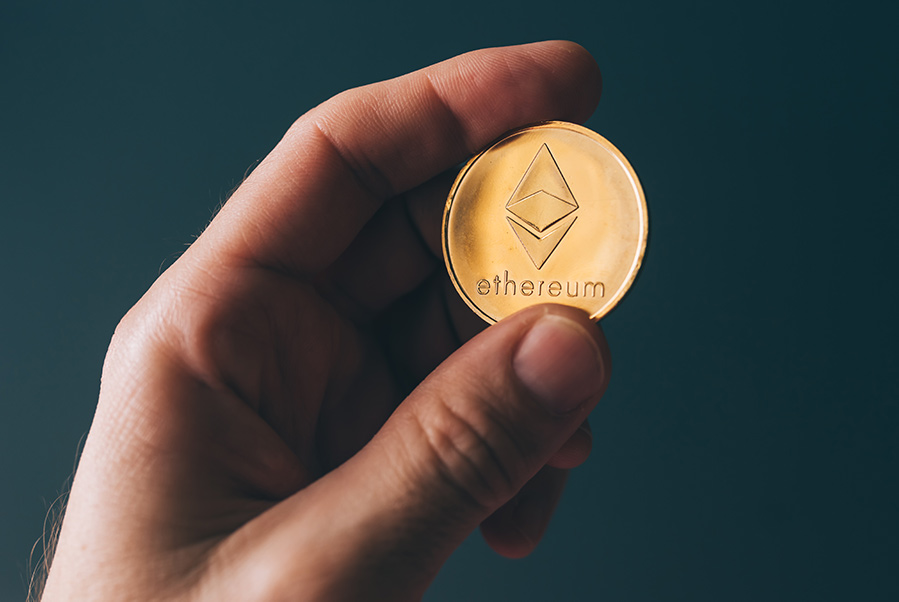
Cardano testnet breaks
Cardano’s testnet was “catastrophically broken” last week according to dev Adam Dean. A bug in the code being tested for the upcoming Vasil hard fork bricked the network. This dismayed a lot of people who worry the network isn’t ready for the fork, however the bug has reportedly been taken out of the code and Dean says things are now “better than ever”.
More Bitcoin and Ethereum ETFs
Monochrome Asset Management has secured an Australian financial services licence (AFSL) to operate spot crypto exchange-traded funds (ETF). Australia’s existing crypto ETFs so far operate under general financial asset authorisation and only indirectly hold crypto-assets. The Bitcoin and Ethereum ETFs are expected to hit the market next month.
Crypto scams fall
The good news is that crypto scams have fallen 65% to US$1.6B (A$2.3B) fraudulently obtained in the year to date, compared with 2021. The bad news is that’s mainly because all the more gullible who are most likely to get fleeced have left the market due to the price action. Chainalysis reported that hacking had increased 58.3% in the year to date to US$1.9B (A$2.8B). The security analytics firm attributed the increase to a proliferation of DeFi protocols which are vulnerable to exploits.
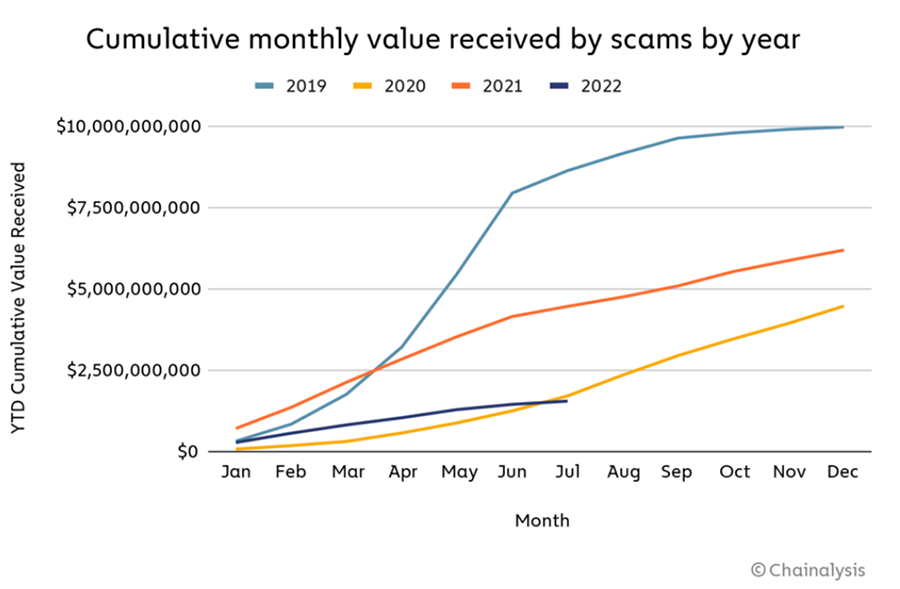
Bits and pieces
Tether has finally got itself a top shelf accounting firm, BDO Italia to do an independent attestation, rather than the former no name firm in the Cayman Islands. It shows a 58% decrease in riskier commercial paper holdings in the quarter and CTO Paolo Ardoino says it’ll reduce it down to zero by the end of October. The Canadian province of Ontario has unveiled new regulations that prohibits retail users from buying more than US$30,000 (A$43.6K) of cryptocurrencies (BTC, ETH, LTC, and BCH are excluded from this restriction). However, that limit is per exchange and users could simply buy ETHand trade it for any other coin in DeFi, so the law likely won’t have much effect. And finally: It’s a running joke that you should do the opposite of whatever CNBC’s Jim Cramer predicts. Trader Algod has started to countertrade his calls and says his inverse Jim Cramer account is up 100% so far.
Until next week, happy trading!

